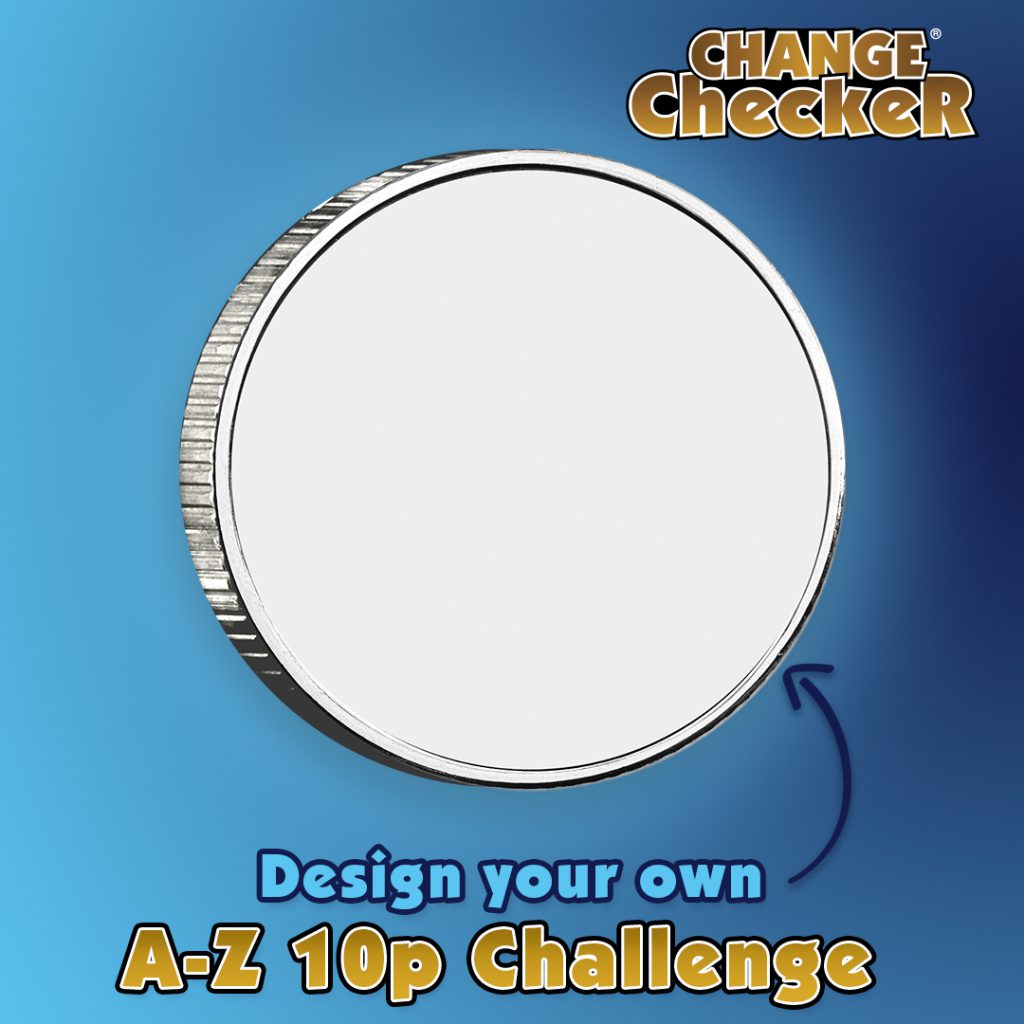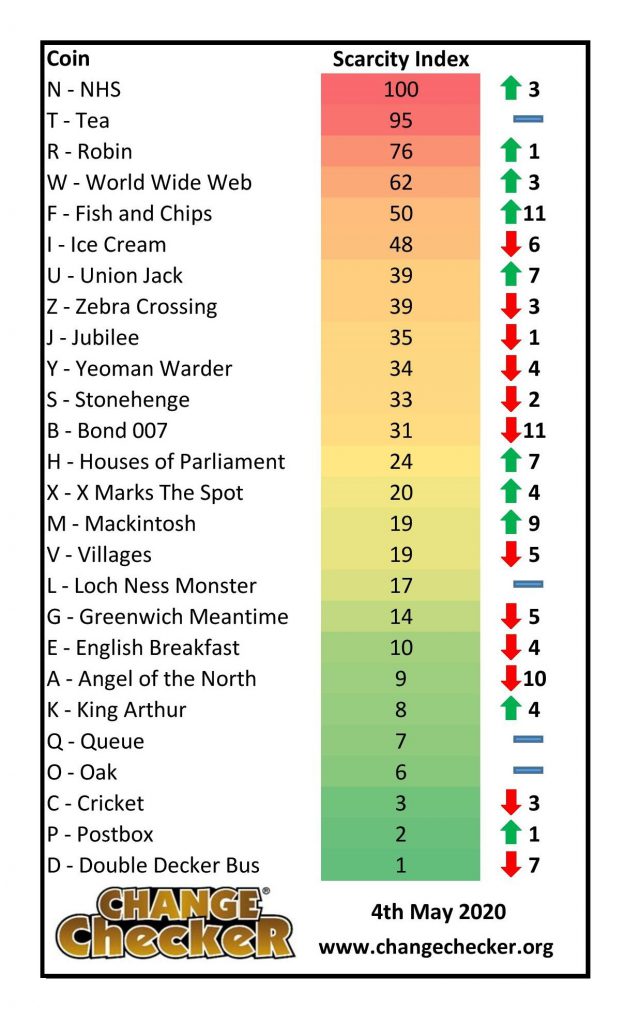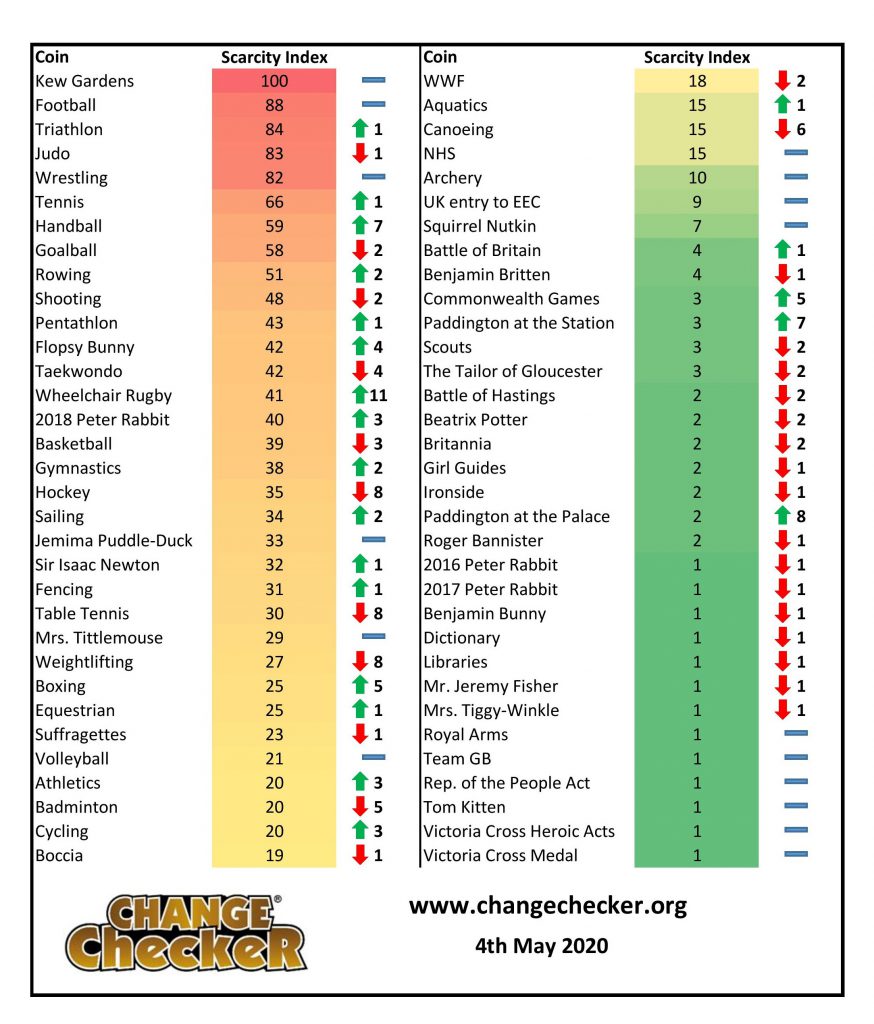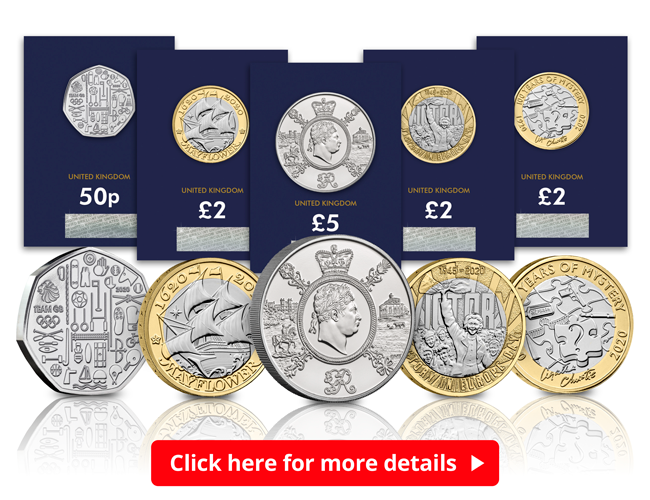Posts by Rachel
Design your own A-Z 10p!
It’s time to get creative as we challenge Junior Change Checkers to design their very own A-Z 10p!
In 2018, the surprise release of 26 commemorative 10p coins celebrating the A-Z of Great Britain caused quite the stir in the collecting world and have since kick started a nation wide coin hunt!
These sought-after coins have proved incredibly tricky to hunt down, but have certainly caught the imagination of the British public with their unique designs.

And so now we’re calling all our Change Checker Juniors to have a go at designing their very own A-Z 10p.
We’ll be turning the TOP 5 designs into virtual 10p coin animations, so stay tuned to see if your design is selected!

If you’d like to get involved, all you need to do is follow these simple steps:
1. Download this PDF and print it out.
2. Create your A-Z 10p design and fill in the details on the page. You can take inspiration from the UK 10ps listed on our web app!
3. Photograph your design.
4. Post a photo of your design in the comments on this Facebook post [link]
The TOP 5 designs will be brought to life in an animation and featured in a Change Checker video, which will be available to watch on the 13th June.
Entries close at 9am on Tuesday 9th June, so don’t delay!
Best of luck and happy designing!
If you’re interested in coin collecting, our Change Checker web app is completely free to use and allows users to:
– Find and identify the coins in their pocket
– Collect and track the coins they have
– Swap their spare coins with other Change Checkers

Sign up today at: www.changechecker.org/app
NHS 10p takes top spot! Your Scarcity Index Update…
It’s time for your latest Scarcity Index update, where we’ll reveal the UK’s most sought-after circulation coins of the last three months! And it’s all change for the A-Z 10ps, as NHS establishes itself in top spot…
You can use the updated A-Z 10p, 50p and £2 indexes below to discover how sought-after the coins in your collection really are.
This information has been compiled using data from the Change Checker Swap Centre and presented in the easy to use indexes below, with arrows to signify how many places up or down a coin has moved since the last Scarcity Index.
A-Z 10p Scarcity Index

Well we really have seen quite a mix up for the latest A-Z 10p Scarcity Index update, with a new leader taking top spot!
B for Bond has not only been knocked off the top spot, but has actually dropped 11 places down towards the middle of the pack.
In its place we have a very worthy winner and it comes as no surprise that the most sought-after A-Z 10p is currently N for NHS. Now, more than ever, the NHS is playing a vital role to keep us safe and well during the coronavirus pandemic and so it seems only fitting that this 10p has grown in popularity. Acting as a reminder of the strength, hope and support of not only our National Health Service, but the British people as a whole during this unpreceded time in history.
Other key movers to keep an eye on are the F for Fish and Chips and M for Mackintosh 10ps, moving up the index 11 and 9 places respectively.
Regardless of where they feature on the above index, if you have any of the A-Z 10ps in your collection you should consider yourself lucky, as they are particularly hard to come by in circulation and each design has a relatively low mintage (just 220,000 of each design released in 2018 and 2.1 million overall in 2019).
50p Scarcity Index

The 50p Scarcity Index has remained fairly stable at the top and bottom, with Kew Gardens holding strong in the top spot, a whole 12 points ahead of the second scarcest 50p in circulation, the Olympic Football.
There’s been a bit of a shuffle around with the Olympic 50ps, with Wheelchair Rugby moving up the index by 11 places! Although it’s definitely worth noting that all of the Olympic 50ps are particularly sought-after due to their low mintage figures and an estimated 75% have been removed from circulation by collectors, making them even harder to get hold of.
Perhaps we’ll see the popularity of these coins increase further next year when the Olympic Games will be held in Tokyo, following their postponement this year.
Another couple of sought-after 50ps we’ve been keeping our eyes on are the 2018 Peter Rabbit and Flopsy Bunny coins. Since making an appearance on the index for the first time towards the end of last year, they’ve since been creeping their way up and up. In this update, Peter Rabbit has moved up by 3 places and Flopsy Bunny by 4! As the two rarest Beatrix Potter 50ps in circulation, it’s no wonder these coins are so sought-after, but are you lucky enough to have them in your collection?
£2 Scarcity Index

The top five coins on the £2 index remain strong, with the Commonwealth Games Northern Ireland keeping its position at the top, 18 points above the second most sought-after £2 coin in circulation.
We’ve seen little activity throughout the top half of the index, with only a few coins shuffling one or two places.
However there’s been a bit more movement in the second half of the index, with the key coin to watch being the 60th Anniversary of the End of World War Two (commonly known as St Paul’s Cathedral) £2. This coin has moved up the index by 4 places and the increased popularity could possibly be due to the significant anniversary year, as 2020 marks 75 years since the end of World War Two.
We’re yet to see any new £2 coins in our change since demand has been so low, although I’m sure I speak for many collectors when I say we eagerly anticipate the release of new £2’s into circulation, hopefully in the near future.
How your Scarcity Index works
Generally collectors have had to rely upon mintage figures to identify the scarcest coins. But they only tell part of the story. Trying to find a good quality coin from 15 – 20 years ago, even for a higher mintage issue, is much more challenging than a more recent issue, as coins become damaged over time and are ultimately removed from circulation.
Additionally, some designs are more hoarded than others by people who might not normally collect coins – the poignant First World War £2 Coin series being an example. Finally, it can be up to a couple of years before the Royal Mint eventually confirms the actual mintage for an issue.
That’s why we have combined the mintage information with two other key pieces of information.
- How many of each design are listed as “collected” by Change Checkers, indicating the relative ease of finding a particular coin.
- The number of times a design has been requested as a swap over the previous 3 months, showing the current level of collector demand.
Importantly, as new coins are released and popularity rises and falls across different designs the Scarcity Index will be updated quarterly allowing Change Checkers to track the relative performance of the UK’s circulation coins.
How much are my coins worth?
The Scarcity Index does not necessarily equate to value but it is certainly an effective indicator. For example, the Kew Gardens 50p coin commands a premium of up to 200 times face value on eBay.
You can use the 6 point guide to help you determine a more realistic value for your coins.
What about £1 Coins?
The £1 Scarcity Index has already been published for the Round £1 coins and, because they are no longer being issued, this is now set in stone.
If you’re interested in coin collecting, our Change Checker web app is completely free to use and allows users to:
– Find and identify the coins in their pocket
– Collect and track the coins they have
– Swap their spare coins with other Change Checkers

Sign up today at: www.changechecker.org/app
Could the 2020 Team GB become the most sought-after 50p ever?
Issued as part of the 2020 Annual Coin Set, the 50p coin supporting Team GB at the Tokyo Olympic Games has quickly become the talk of the collecting world…

As the news broke that this year’s Olympic Games would be postponed until 2021, collectors were soon asking the question, “What will happen to the 2020 Team GB 50p?”
Despite being released at the start of the year within the Annual Coin Set, the coin is yet to be individually released. We now know that this too will be postponed, in line with the Olympic Games, meaning collectors will have to wait until 2021 for the individual release of the Team GB 50p.
Two versions of the Team GB 50p
Excitingly, this will mean that there are two versions of the coin – one with the obverse dated 2020 from this year’s Annual Coin Set and one with the obverse dated 2021 for next year’s individual release.
The reverse design by David Knapton currently depicts the individual Olympic sports accompanied by the Olympic Rings, the Team GB logo, the inscription ‘TEAM GB’ and the date ‘2020’. But will this also be updated to reflect the new date of the Games – 2021?
Already in high demand
Already, the 2020 version of the Team GB 50p is being listed on secondary market sites for well over face value, as collectors rush to secure this version of the coin.

In fact, it appears that collectors have removed the coin from Annual Sets and is seen selling on eBay for over £35.
Demand for the 2020 version of the Team GB 50p is sure to be high, especially as it is only available as part of the Annual Set, meaning far fewer will be minted than if it were individually released.
Olympic 50p craze
Olympic themed coins are no stranger to the limelight…
In fact, it was the 2012 Olympic 50p collecting craze which kick started many collector’s interest in the hobby.
Since then an estimated 75% of these coins have been removed from circulation by collectors adding them to their collection.
And so collectors were delighted in 2016 when The Royal Mint issued a special 50p to wish Team GB success for the Rio 2016 Games, considered by many to be the 30th Olympic 50p.

The coin’s obverse features a swimmer with the Team GB logo, the Olympic rings and the inscription ‘TEAM GB’. Designed by Tim Sharp, the coin has been officially endorsed by Team GB and celebrates the spirit of British Olympians – a must have for all Olympic 50p Collectors.
But now as the 2020 Team GB 50p takes centre stage, the coin collecting community has been sent into a frenzy once more.
I’m sure not only Olympic 50p collectors, but all Change Checkers will be really eager to secure this highly sought-after coin and will also be looking forward to the individual release of the updated version next year.
Own the 2020 Team GB 50p in the Brilliant Uncirculated Annual Coin Set
Don’t miss the opportunity to secure the sought-after 2020 Team GB 50p as part of the Annual Coin Set.
Own the set today in Brilliant Uncirculated quality for £40.00 (+p&p).

